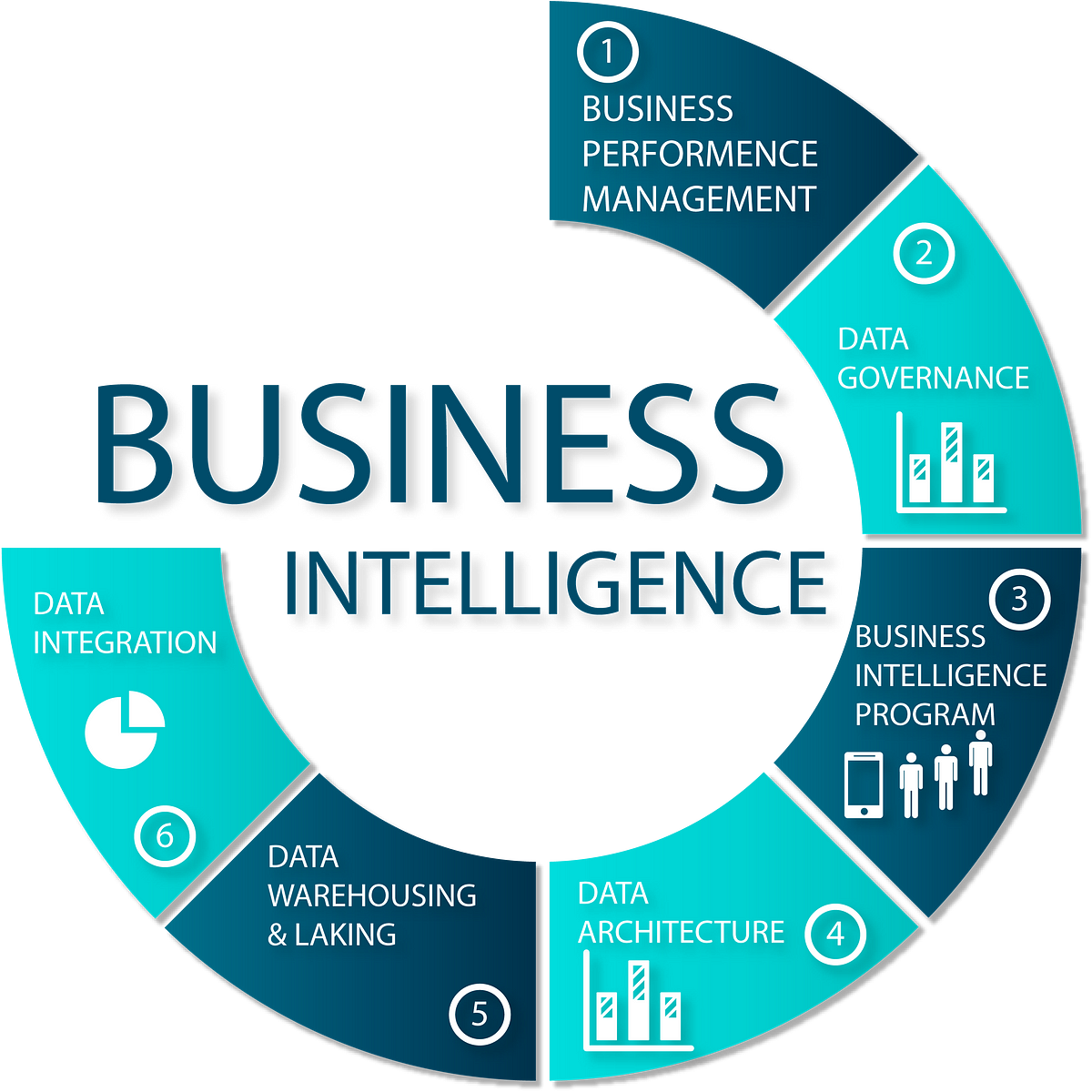
Business intelligence (BI) isn’t just a buzzword anymore—it’s the backbone of smart decision-making in today’s fast-moving world. By 2025, companies are swimming in data, and those who know how to turn that data into clear, actionable insights are the ones winning. Whether you’re running a small startup or leading a big corporation, mastering BI can make or break your success. Let’s break it down in plain language: what BI is, why it matters, and how you can use it to make better decisions in 2025.

What Is Business Intelligence, Anyway?
At its core, business intelligence is about taking raw data—numbers, customer behaviors, sales figures, you name it—and turning it into something you can actually use. Think of it like cooking: data is your raw ingredients, and BI is the recipe that transforms them into a delicious meal (or in this case, smart decisions).
In 2025, BI is more powerful than ever. It’s not just about spreadsheets or boring reports. Modern BI tools use fancy tech like artificial intelligence (AI), machine learning, and real-time analytics to help you spot trends, predict outcomes, and make choices faster. Whether it’s figuring out what your customers want or catching a problem before it tanks your profits, BI is your go-to tool.
Why BI Matters in 2025
The world moves fast, and businesses that can’t keep up get left behind. Here’s why BI is a game-changer in 2025:
- Data Overload: We’re creating more data than ever. Every click, purchase, or social media post adds to the pile. BI helps you sort through the noise and find what actually matters.
- Speed Is King: Customers expect instant results—think same-day delivery or real-time support. BI gives you the insights to act quickly and keep them happy.
- Smarter Competition: Your competitors are using BI to optimize everything from pricing to marketing. If you’re not on board, you’re playing catch-up.
- Personalization Rules: People want experiences tailored to them. BI helps you understand your customers so you can offer exactly what they need, when they need it.
In short, BI isn’t just nice to have—it’s a must-have if you want to stay relevant.
The Building Blocks of Business Intelligence
To master BI, you need to understand its key pieces. Here’s what makes it tick:
1. Data Collection
It all starts with data. This can come from anywhere: your website, sales records, customer feedback, social media, or even sensors in a factory. In 2025, companies are pulling data from more places than ever, like IoT devices (think smart thermostats or connected cars) and AI-driven chatbots.
The trick is to collect clean, reliable data. Garbage in, garbage out—if your data’s messy, your insights will be too. Tools like Snowflake or Google BigQuery make it easier to gather and organize data from different sources without losing your mind.
2. Data Storage
Once you’ve got the data, you need a place to keep it. That’s where data warehouses and cloud storage come in. In 2025, cloud platforms like Amazon Web Services (AWS), Microsoft Azure, or Google Cloud are the go-to choices because they’re scalable, secure, and let you access your data from anywhere. No need for a dusty server room anymore!
3. Data Analysis
This is where the magic happens. BI tools like Tableau, Power BI, or Looker take your data and turn it into insights. They can spot patterns, highlight trends, and even predict what’s coming next. For example, they might tell you that sales of your winter jackets spike every November, so you can stock up early.
In 2025, AI is supercharging this step. Machine learning can dig into your data and find connections you’d never spot on your own, like why certain customers stop buying or which products are likely to flop.
4. Data Visualization
Nobody wants to stare at a wall of numbers. That’s why BI tools create charts, graphs, and dashboards that make insights easy to understand. A good dashboard is like a car’s GPS—it shows you where you are, where you’re going, and if there’s trouble ahead. In 2025, interactive dashboards let you zoom in on details or play around with “what if” scenarios.
5. Decision-Making
The whole point of BI is to help you make better choices. Whether it’s launching a new product, tweaking your marketing, or cutting costs, BI gives you the facts to back up your decisions. In 2025, real-time BI means you can act on insights as they happen, not days or weeks later.
How to Master BI in 2025
Ready to level up your BI game? Here’s a step-by-step guide to making it work for your business.
Step 1: Know Your Goals
Before you dive into BI, figure out what you’re trying to achieve. Want to boost sales? Improve customer satisfaction? Cut waste? Clear goals help you focus on the right data and avoid getting lost in the weeds. For example, if you’re a retailer, you might want to know which products sell best during the holidays so you can plan your inventory.
Step 2: Pick the Right Tools
There’s no shortage of BI tools in 2025, but not all are created equal. Here are a few popular ones:
- Tableau: Great for stunning visualizations and user-friendly dashboards.
- Microsoft Power BI: Affordable and integrates well with other Microsoft products.
- Looker: Awesome for digging deep into data and building custom reports.
- Qlik Sense: Perfect for businesses that want self-service analytics for their teams.
Choose a tool that fits your budget, team skills, and data needs. Many offer free trials, so you can test them out before committing.
Step 3: Get Your Data in Order
Good BI starts with good data. Make sure your data is accurate, up-to-date, and organized. This might mean cleaning up old records, merging data from different systems, or setting up automated data collection. Tools like Alteryx or Talend can help streamline this process.
Also, think about data governance—aka, who gets to access what. In 2025, data privacy laws like GDPR and CCPA are stricter than ever, so you need clear rules to stay compliant.
Step 4: Train Your Team
BI tools are only as good as the people using them. Invest in training so your team knows how to read dashboards, spot trends, and ask the right questions. In 2025, many BI platforms offer built-in tutorials or AI assistants to help new users get started.
You don’t need everyone to be a data scientist, but having a “data-literate” team makes a big difference. Encourage a culture where people feel comfortable using data to back up their ideas.
Step 5: Start Small, Then Scale
Don’t try to boil the ocean. Start with a small BI project—like analyzing your website traffic or tracking sales trends—and build from there. Once you see results, you can tackle bigger challenges, like predicting customer churn or optimizing your supply chain.
Step 6: Embrace AI and Automation
In 2025, AI is a BI superpower. Tools like ThoughtSpot or Sisense use AI to automatically find insights, answer questions in plain language, and even suggest actions. For example, you could ask, “Why are my sales dropping?” and the tool might point out a specific product or region dragging you down.
Automation is also huge. Set up alerts for key metrics (like if website traffic tanks) or schedule reports to run automatically. This saves time and keeps you ahead of problems.
Step 7: Keep Evolving
BI isn’t a “set it and forget it” thing. Your business changes, your customers change, and your data needs to keep up. Regularly check if your BI setup is still delivering the insights you need. Stay on top of new tools and trends—like generative AI or real-time analytics—to stay competitive.
Real-World Examples of BI in Action
Let’s look at how businesses are using BI in 2025 to make smarter decisions:
Retail: Personalizing the Customer Experience
A clothing retailer uses BI to track customer purchases and browsing habits. They notice that younger customers love bold colors but often abandon their carts if shipping costs are too high. Using this insight, they offer free shipping on orders over $50 and promote colorful items to that audience. Sales jump 15% in a month.
Healthcare: Improving Patient Care
A hospital uses BI to analyze patient data and spot patterns. They discover that certain treatments lead to faster recoveries for specific conditions. By sharing this with doctors, they improve patient outcomes and cut costs by avoiding unnecessary procedures.
Manufacturing: Optimizing Operations
A factory uses BI to monitor machine performance in real-time. When a sensor flags a potential breakdown, the team gets an alert and fixes it before production stops. This saves thousands in downtime and keeps orders on schedule.
Marketing: Nailing Campaigns
A marketing agency uses BI to track ad performance across platforms. They see that TikTok ads are crushing it with Gen Z but flopping with older audiences. They shift their budget to focus on TikTok for younger customers and LinkedIn for professionals, boosting click-through rates by 20%.
Challenges to Watch Out For
BI isn’t all smooth sailing. Here are some common hurdles and how to handle them:
- Data Silos: When data is stuck in different departments or systems, it’s hard to get the full picture. Use integration tools to bring it all together.
- Overwhelm: Too much data can paralyze decision-making. Focus on key metrics (called KPIs) that tie directly to your goals.
- Resistance to Change: Some team members might not trust data or want to stick with “gut” decisions. Show them small wins to build confidence in BI.
- Cost: BI tools can be pricey, especially for small businesses. Look for affordable options like Power BI or open-source tools like Metabase.
What’s Next for BI in 2025 and Beyond?
The future of BI is exciting. Here’s what’s on the horizon:
- AI Gets Smarter: Expect AI to do more heavy lifting, like automatically suggesting strategies or predicting market shifts.
- Real-Time Everything: As 5G and edge computing grow, BI will deliver insights faster, letting you react in the moment.
- Augmented Analytics: Tools will combine data with virtual reality or voice interfaces, making it easier to interact with insights.
- Ethics and Privacy: With data breaches and regulations on the rise, BI will focus more on secure, ethical data use.
Wrapping It Up
Mastering business intelligence in 2025 is about turning data into decisions that drive success. By collecting the right data, using smart tools, and building a data-savvy team, you can stay ahead of the curve. Whether you’re boosting sales, delighting customers, or streamlining operations, BI is your secret weapon. Start small, think big, and keep learning—because in today’s world, the businesses that win are the ones that know how to make sense of their data.




